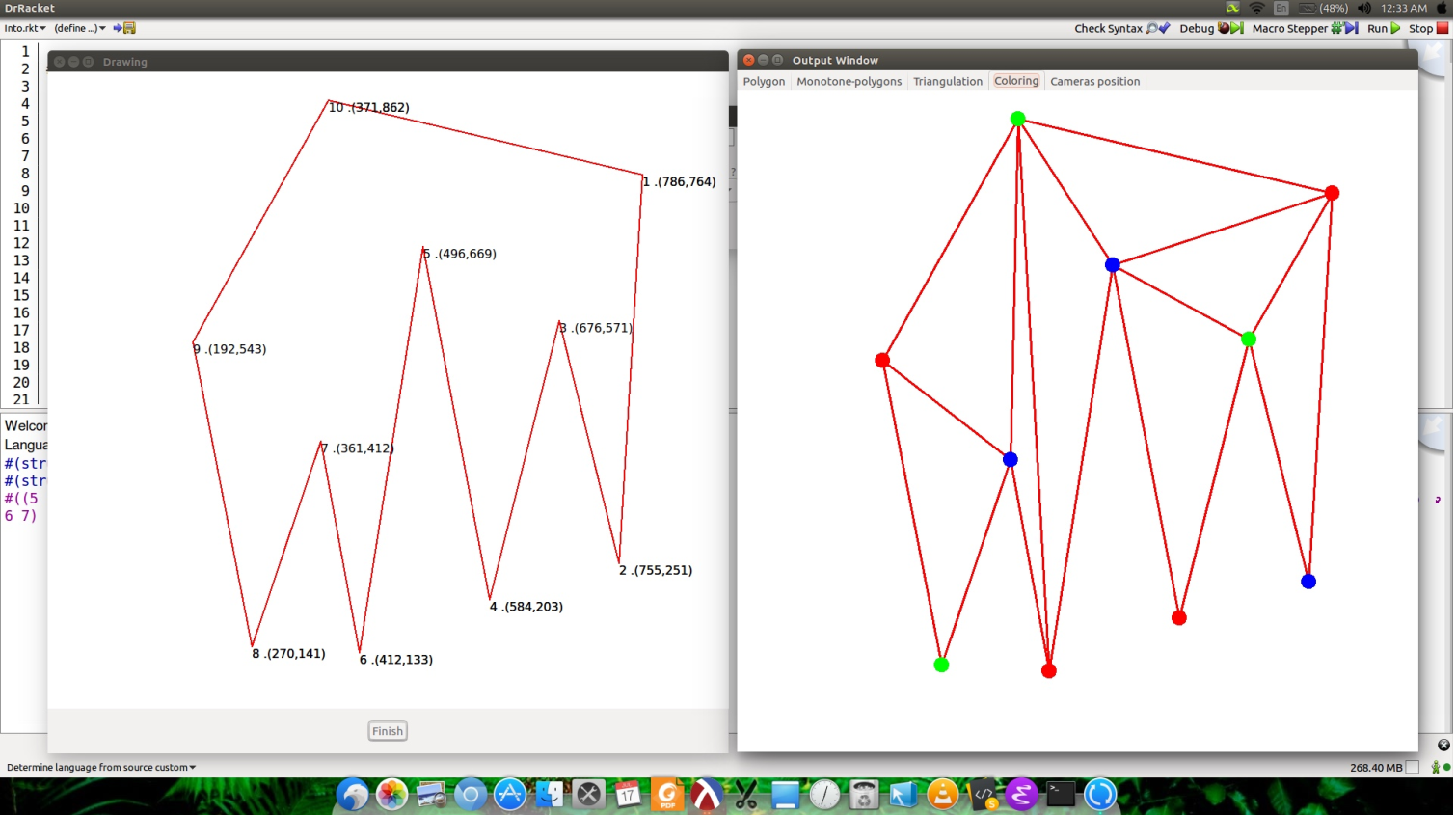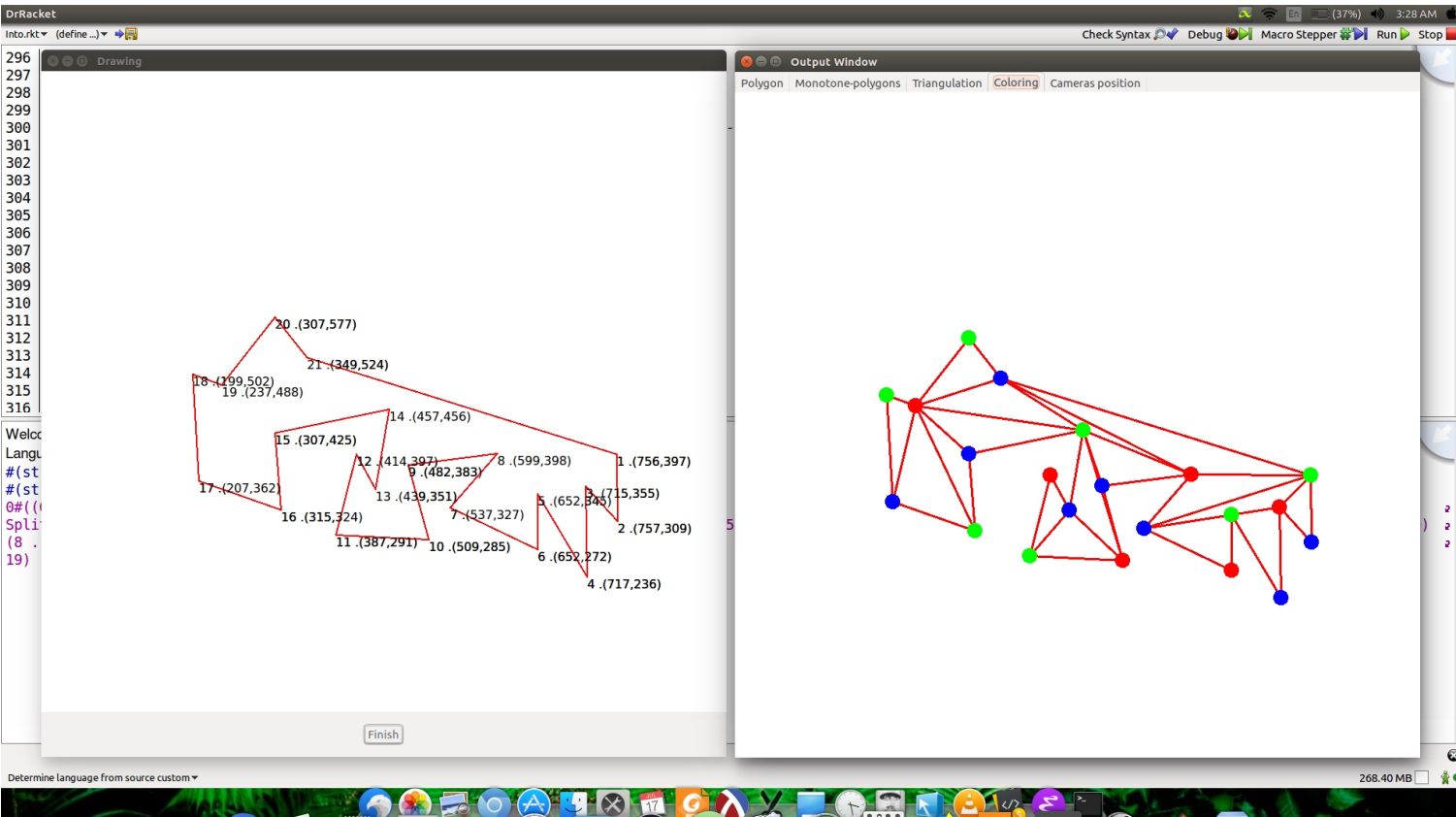A complete UI + backend program to find approximate solutions to the Art Gallery Problem
Art Gallery Problem : Given the layout (map) of an art gallery what is the minimum number of stationary guards (CC TV cameras) needed to guard every point in the art gallery
For more about Art Gallery Problem : https://en.wikipedia.org/wiki/Art_gallery_problem Also i have included the books we used for searching the algorithms to solve the problem.
So to begin and explore art gallery theorom and it's algorithm
-
Install the DrRacket IDE.
-
Open the file begin.rkt. Run the program, enter number of sides of Polygon, give input of polygon using a plotting window as points in CLOCKWISE order to obtain triangulations of polygon and you'll get in return the minimum number of cameras along with their location.
Here are screenshots of our program working
The user draws the input as shown in the left, and the program outputs in a new window (the left one), a triangulation of the polygon with a three coloring of the vertices. Now pick any one color and add cameras at those vertices


We have created a main file with canvas package of racket. On running the file we get input window in which user can give input to the polygon by marking points on screen. Program takes points as input and opens the output window with tabs corresponding to triangulation, monotone partition, colouring and camera position. We have created objects corresponding to a polygon to which we call monotoning partitioning function. New monotone polygon is instantiated in separate monotone class inherited from polygon class. Monotone polygon is triangulated to give us triangle. Triangle is instance of node class inherited from monotone class
-
We first break our polygon into monotone polygons. to do so we first identify the vertices that causes the nonmonotonicity of the polygon and then we resolve them accordingly. We simply iterate through the vertices of polygon and break it into monotone polygons.
-
After partitioning our polygon Into monotone polygons we triangulate each polygon separately by chopping of triangles one by one and then recursively calling the function on remaining polygon .
-
We then make a graph whose vertexes (of graph ,not polygon) are the triangles and two vertexes are joined by an edge(of graph ,not polygon) if they share a side in common
-
We then run a depth-first-search on the graph and in this process we go to each vertex of the graph (that is each triangle) and colour the vertices by three different colours. This results in a three colouring of a graph whose vertices are the vertices of the polygon and whose edges are the edges of the the graph.
-
After three colouring of the polygon we identify the colour that is used least no of times and identify the vertices of the polygon that were coloured by this colour ,placing cameras at these vertices provides the solution of our problem.